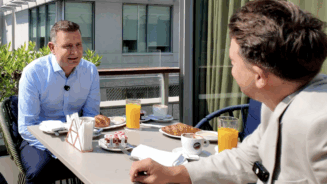Benchmark busters
What is the biggest tactical or strategic decision that Lamotte has successfully taken in recent years?
“In 2006, we made a killing because we had around 60% of the asset allocation in equities in emerging markets, which is massive overweight compared with the normal benchmark.
“This was heavily overweight emerging vis-à-vis Europe, the US and Japan. Today, if I look at equity emerging markets, out of the 30%, we have a 6.2% allocation, so we are underweight at this point.”
Gold is another asset where Lamotte has been invested against the trend. He cites the massive monetary expansion of printed notes around the world, which, he says, could one day see gold reassert its position as a traditional hedge.
“I have had discussions with important clients of the group, especially the billionaires, about the vision that gold is an intergenerational investment vehicle. It is not just for the client but the children of the client, and for the grandchildren. It has an investment horizon of around 50 years.”
As for the outlook for the rest of this year, he says that, in general, there are two kinds of year in investment. “The first is when you know by the end of January that the year will be good. The second is when you know by mid-February that the year is going to be more difficult.
“In general, I think we are in the second kind of year. Liquidity for me is a key issue, and cash, at least for the moment, is still the most liquid asset.
“We are prepared, we believe, for what could happen during the summer. We have to be able to grasp these opportunities – and for that you have to have the dry powder to do it.”
Three key trends
Back to gold – Given today’s low, and sometimes negative, interest rate environment – combined with increasing uncertainty in Europe, Switzerland and Japan– we have started to allocate to gold in our portfolios. We like gold because it is less vulnerable to monetary policy decisions.
It is worth remembering that following a decline in prices since the end of 2011, gold has strongly rebounded since the start of the year. The dollar’s limited potential appreciation and the impact of strong geopolitical tensions should also be favourable for gold prices in the medium term.
High yield attracts – In Europe, despite a slow but solid recovery in economic fundamentals, we find European high yield attractive, while staying away from investment grade – which in our view is overbought since the European Central Bank’s announcement on 8 June. In the US we prefer investment grade, and we are exiting high yield.
Overweight on EM – Emerging markets should benefit from accommodative ECB policies, despite the US Federal Reserve’s small rate hike. The stabilisation of oil prices at around $50 a barrel of West Texas Intermediate justifies, in our view, an allocation increase towards emerging markets. We continue to favour Asia – in particular northern Asia – and countries with healthy macroeconomic fundamentals willing to implement structural reform.





